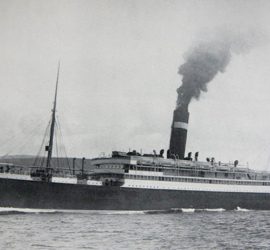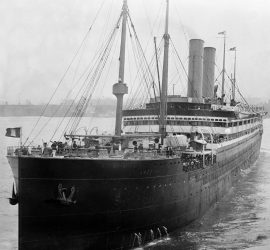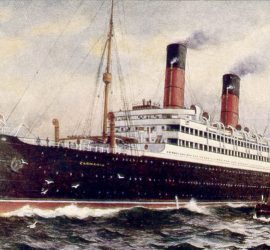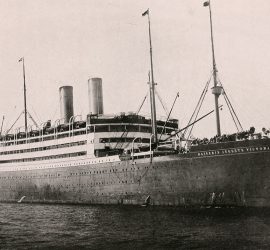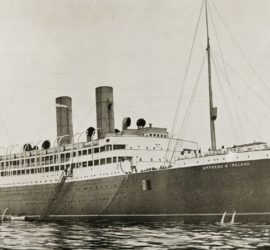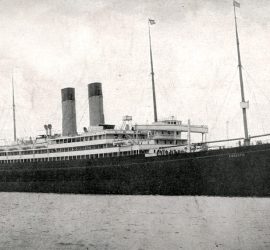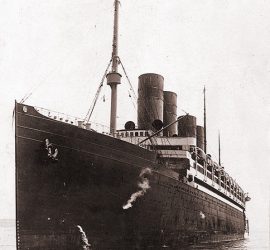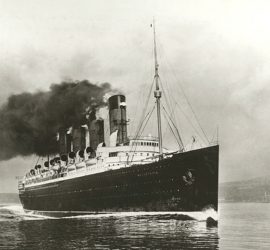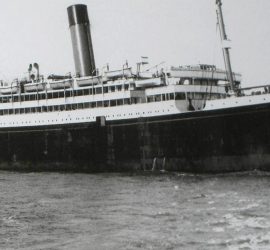Daily archives: March 23rd, 2018
1905 – 1957 / Also known as America (I) / A German competitor in terms of size and luxury, the Amerika was seized and used as an allied troop transport during World War I. Her post-war career was under the American flag, but as her age caught up with her, she was finally sent to the breakers.
1905 – 1932 / Partially an experimental ship, the Carmania was fitted with turbines to test their feasibility. While never a record-breaker herself, she paved the way for the famous greyhounds Lusitania and Mauretania.
1906 – 1931 / Also known as Empress of Scotland (I) / Entering service as the largest ship in the world, the Kaiserin Auguste Victoria focused on size and comfort rather than speed. Sailing in HAPAG livery for eight years, the ship was transferred to Canadian-Pacific after World War I but was done in by fire in late 1930.
1906 – 1914 / Although not as famous as her larger contemporaries, the Empress of Ireland made tragic history when she collided and sank in the St. Lawrence River, with the loss of over 1,000 lives.
1907 – 1934 / The final ship of White Star’s ‘Big Four’, the Adriatic was actually the first ship to be both longer and larger than the fabled Great Eastern. Serving with distinction through the first world war, she was later relegated to less prestigious routes and finally sent to the breakers in Japan.
1907 – 1940 / The last of the German ‘Four Flyers’, the career of Kronprinzessin Cecilie ended when she was confiscated by the US for military use in World War I. Afterwards, she languished in Chesapeake Bay for almost 20 years before being scrapped.
1907 – 1915 / The first of Cunard’s two stunning greyhounds, the Lusitania’s life was tragically cut short during World War I, when she was torpedoed and sunk with great loss of life.
1907 – 1934 / The legendary Mauretania saw an amazing career during peace as well as war, and held the Blue Riband for more than 20 years. She became one of the most famous Cunard ships of all time.
1909 – 1917 / As part of an experiment that would decide the engine arrangements for the Olympic-class, the Laurentic had a successful, albeit brief career that ended when she was sunk during World War I, while carrying a precious cargo of gold.

